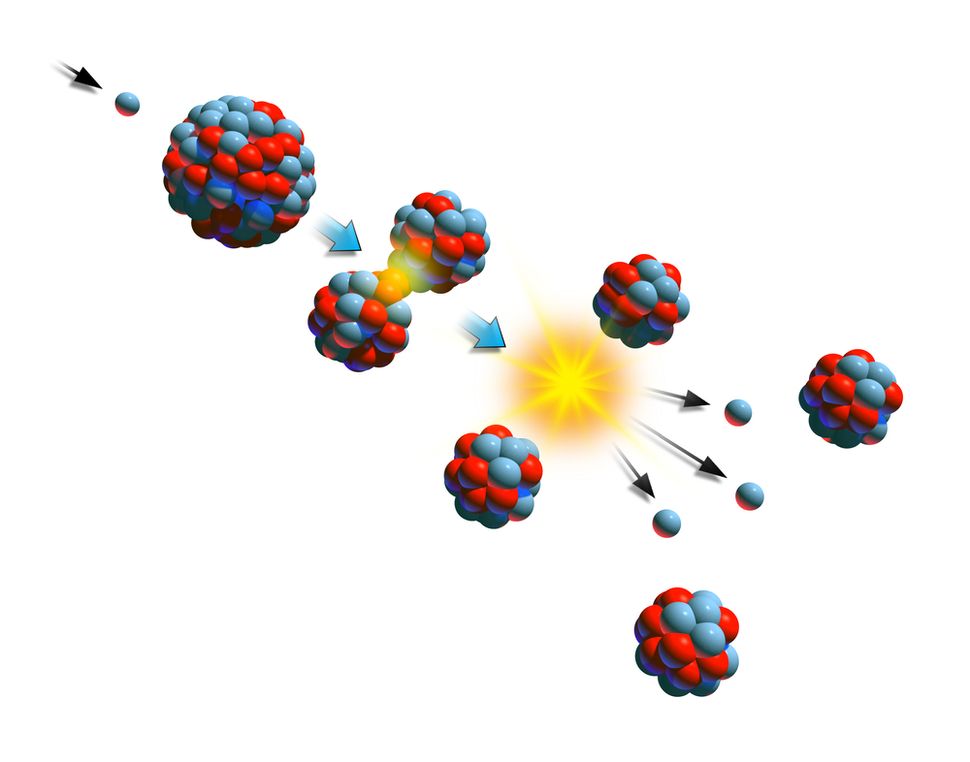

Nuclear energy makes it possible to produce low-carbon, competitive, and continuous electricity It will play a key role in the energy transition,Įlectric mobile applications, medicine, space applications, and even quantum computing. Now more than ever, it is an energy of the future. Nuclear energy, a revolutionary scientific discovery from the last century, continues to open up new avenues of innovation. It also plays a major role in the restoration of art works and is very useful to archaeologists, who use it to date, identify, and reconstruct the history of objects discovered during digs. It helps protect the environment, and notably the sea bottom, through studies on the acidification of the oceans and plastic pollution. In the fields of agriculture and food production, it improves agricultural techniques, food storage, and nutrition. In medicine, it has enabled major progress in prevention, diagnostics, disease treatment, radiotherapy, alphatherapy, cancer research, etc. While it has made major advances in medical research possible, its contributions to the arts, archeology, and the agri-food industry are less well-known. Nuclear energy has a lot of other applications than producing electricity. The well-known and less well-known applications of nuclear energy
:max_bytes(150000):strip_icc()/GettyImages-103311355-490ad3ba66d44d40b738a0e7d468ac8a.jpg)
In 1973, the oil crisis and the oil price hike favor the “all nuclear” approach.In 1969, the Chaban-Delmas government decides to build two pressurized water nuclear reactors in Fessenheim.In 1967, the La Hague plant is commissioned.In 1963, the first nuclear reactor of the French utility EDF is commissioned in Chinon.On October 26, 1959, the Cadarache site is created by the CEA for research on fast neutron reactors (FNR).On June 17, 1958, General de Gaulle decides to build a uranium enrichment plant in Pierrelatte in the Drôme region.On July 24, 1952, the National Assembly votes for the construction of two nuclear reactors on the Marcoule site.On October 18, 1945, General de Gaulle founds the French Atomic Energy Commission (CEA).En 1938, Otto Hahn discovers fission and the colossal quantity of energy it produces.1934: Irène et Frédéric Joliot-Curie discover artificial radioactivity.She is awarded two Nobel prizes for these discoveries: one in 1903 and another in 1911. En 1900, Marie Curie, discovers radioactivity.1896: Henri Becquerel observes radiation from uranium for the first time.Proven expertise in recycling and nuclear waste management

Using nuclear energy to fight climate change.Using nuclear energy to fight climate change Global expert across the nuclear fuel cycle Recycling of electric vehicle batteries: launch of a new industrial pilot.Vocational training in the nuclear environment.Maintenance and specialized support services.Transporting and storing nuclear material.World leader in recycling used nuclear fuels.International expert in uranium processing.

United States Nuclear Regulator Committee. Nuclear fusion is more widely known for its usage in something like the hydrogen bomb where different isotopes fuse together and release a massive amount of energy (17.6 MeV to be exact)(Atomicarchive, 2015, Para 1). An example of nuclear fusion would be the power that fuels both the sun and the stars. Nuclear fusion is simply explained as the process in which the fusion of two “light elements”, which are elements with smaller atomic numbers, release nuclear energy. This is no longer an option because they can no longer operate and are in the process of decommissioning. There is also a known 3rd method called “Heap Leaching” that has been used to extract the uranium from ore at the conventional mills. However, the mining method of obtaining uranium isn’t used very much anymore as there is a method which instead of mining, they inject chemicals into underground uranium deposits to dissolve or “leach” uranium from the ore.


 0 kommentar(er)
0 kommentar(er)
